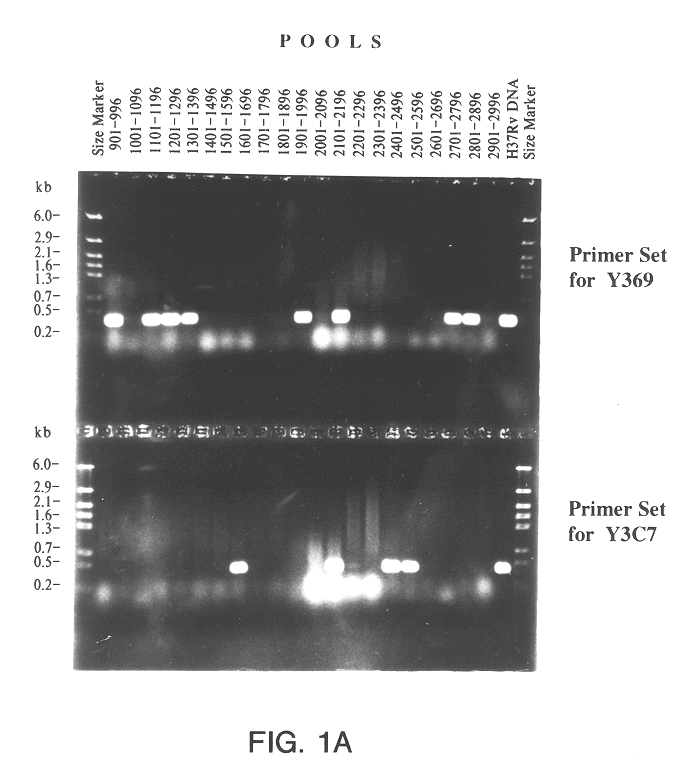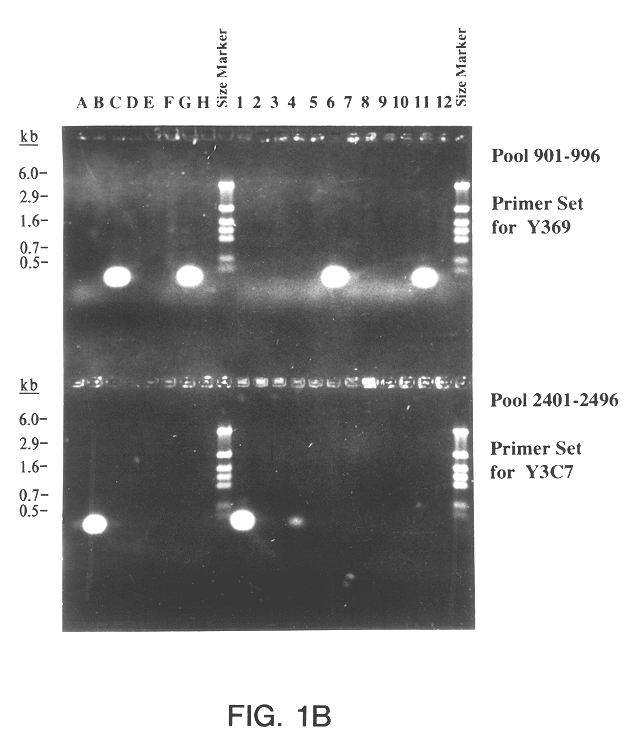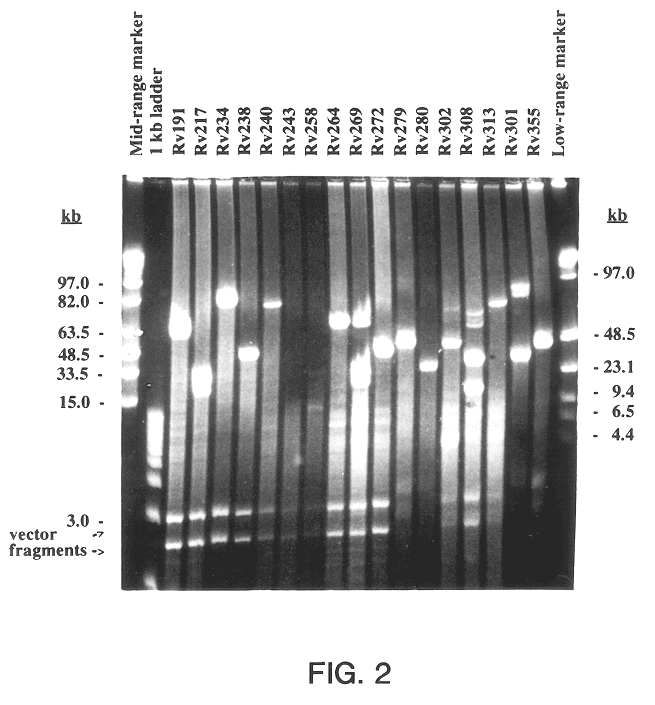Method for isolating a polynucleotide of interest from the genome of a mycobacterium using a bac-based DNA library: application to the detection of mycobacteria
a technology of dna library and polynucleotide, applied in the field of isolating polynucleotides of interest from the genome of a mycobacterium, can solve the problem of producing a comprehensive set of canonical cosmids representing the entire genome, and achieve the effect of reducing the potential for recombination and avoiding the lethal overexpression of cloned bacterial genes
- Summary
- Abstract
- Description
- Claims
- Application Information
AI Technical Summary
Benefits of technology
Problems solved by technology
Method used
Image
Examples
example 1
Construction of a pBeloBAC11 Library of M. tuberclosis H37Rv.
Partial HindIII fragments of H37Rv DNA in the size range of 25 to 180 kb were ligated into pBeloBAC11 and electroporated into strain E. coli DH10B. While cloning of fractions I (25 to 75 kb) and II (75 to 120 kb) gave approximately 4.times.10.sup.4 transfornants (white colonies), cloning of fraction III (120 to 180 kb) repeatedly resulted in empty clones. Parallel cloning experiments using partial HindIII digests of human DNA resulted in stable inserts for all three fractions (data not shown), suggesting that the maximum size of large inserts in BAC clones is strongly dependent on the source of the DNA. Analysis of the clones for the presence of inserts revealed that 70% of the clones had an insert of the appropriate size while the remaining 30% of white colonies represented empty or lacZ'-mutated clones. Size determination of randomly selected, Dral-cleaved BACs via PFGE showed that the insert sizes ranged for the majorit...
example 2
Direct DNA Sequence Analysis of BACs.
To characterize the BAC clones, they were systematically subjected to insert termini sequencing. Two approaches, direct sequencing of BAC DNA and PCR with degenerate oligonucleotide primers (DOP), adapted to the high G+C content of mycobacterial DNA, were used. In a first screening phase, 50 BAC clones designated Rv1 to Rv50 were analysed using both methods in parallel. Except for two clones, where the sequences diverged significantly, the sequences obtained by the two methods only differed in length. Sequences obtained directly were on average about 350 bp long and for 95% of the clones both the SP6 and T7 endsequences were obtained at the first attempt. Sequences obtained by DOP-PCR were mostly shorter than 300 bp. For 40% of the BACs we obtained only very short amplicons of 50 to 100 base pairs from one end. In two cases the sequence obtained with the DOP-PCR differed from the sequences obtained by direct sequencing, and in these cases E. coli...
example 3
Representativity of the Library.
After having determined the end-sequences of 400 BACs a certain redundancy was seen. The majority of clones were represented at least 3 to 4 times. Maximum redundancy was seen in the vicinity of the unique ran operon, as 2.5% of the clones carried identical fragments that bridge the cosmids Y50 and Y130 (FIG. 3, approximate position at 1440 kb). The majority of clones with identical inserts appeared as two variants, corresponding to both possible orientations of the HindIII fragment in pBeloBAC11. This suggests that the redundancy was not the result of amplification during library construction, but due to the limited number of possible combinations of partial HindIII fragments in the given size-range of 25 to 120 kb. To detect rare BAC clones, a pooled PCR protocol was used. Primers were designed on the basis of the existing cosmid sequences and used to screen 31 pools of 96 BAC clones. When positive PCR products of the correct size were obtained, sma...
PUM
| Property | Measurement | Unit |
|---|---|---|
| volume | aaaaa | aaaaa |
| volume | aaaaa | aaaaa |
| pH | aaaaa | aaaaa |
Abstract
Description
Claims
Application Information
 Login to View More
Login to View More - R&D
- Intellectual Property
- Life Sciences
- Materials
- Tech Scout
- Unparalleled Data Quality
- Higher Quality Content
- 60% Fewer Hallucinations
Browse by: Latest US Patents, China's latest patents, Technical Efficacy Thesaurus, Application Domain, Technology Topic, Popular Technical Reports.
© 2025 PatSnap. All rights reserved.Legal|Privacy policy|Modern Slavery Act Transparency Statement|Sitemap|About US| Contact US: help@patsnap.com



